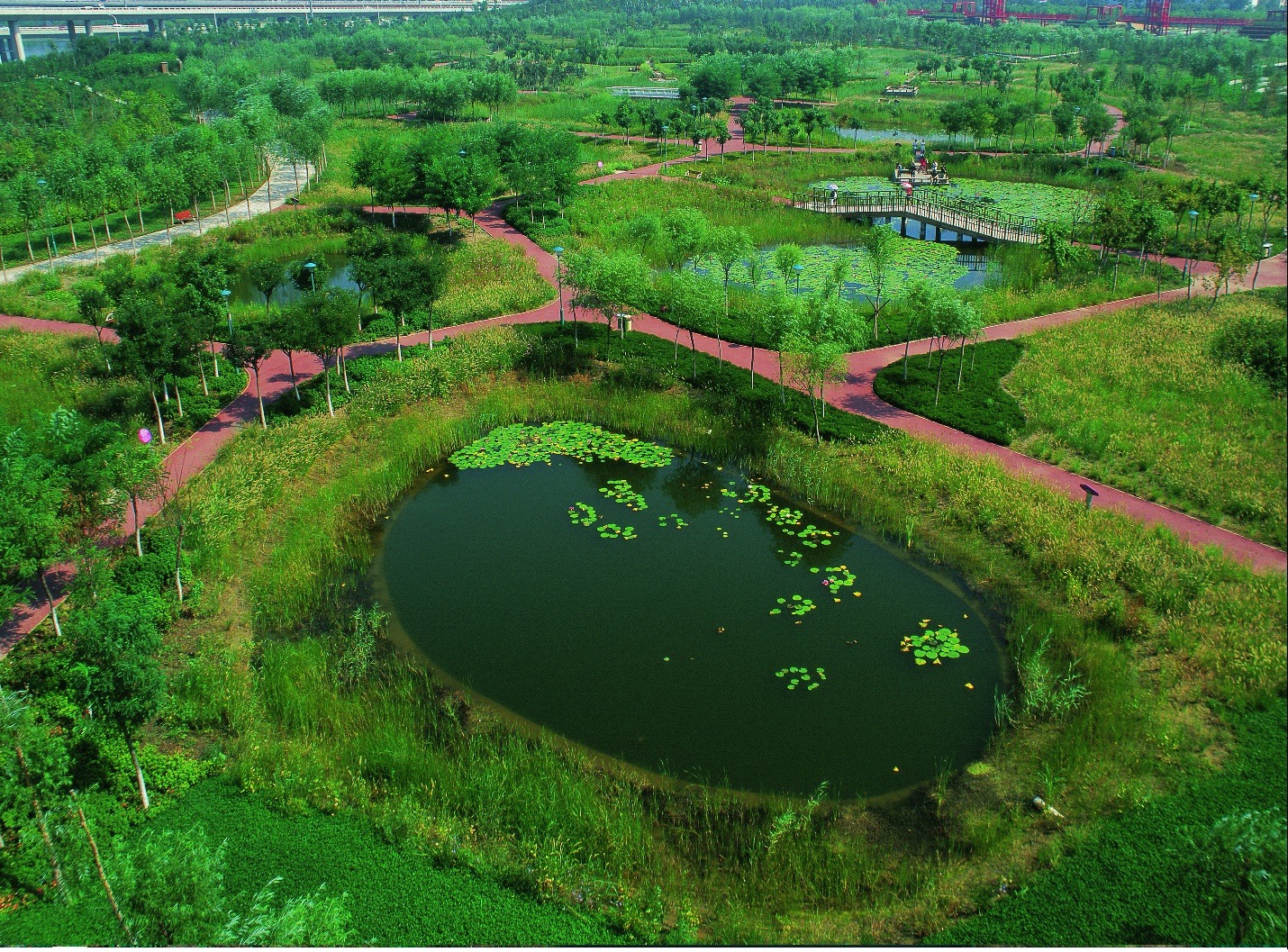The term “concrete jungle” evidently dates back to the 1940s, and it is very apt. It refers to densely developed urban centers where a high proportion of the land surface is either built upon or paved and is therefore impermeable. Such places are often located on rivers or coasts, but despite their natural and man-made drainage infrastructure many are increasingly vulnerable to pluvial flooding.
A flood is a temporary high-water condition on normally dry land caused by rivers overflowing their natural banks or levees, and/or intense local precipitation or rapid snowmelt. Multiple factors determine whether or not a flood occurs. Rainfall intensity, total volume, and duration are obviously important, but so too are antecedent conditions, topography, and land cover.
As a temporary condition, floodwaters eventually drain away through a combination of storm drains, natural waterways, and soaking into the ground. The poorer the natural and man-made drainage in a location, the longer the floodwaters will linger. Man-made drainage infrastructure only has so much capacity, so geology and soil type—as well as vegetation type, abundance, and location—are important in determining how much water will infiltrate into the ground surface and how much will flow over land. In urbanized areas, and particularly in large cities, the greater the area covered by construction, paving, and other impermeable surfaces, the fewer opportunities water has to infiltrate into the ground.
Sponge Cities
After years of rapid urbanization, China has been experiencing increasing urban floods, and the risk is only likely to grow. Over the last four decades the country’s urban population expanded fivefold and it has been projected that 70% of the Chinese population will be living in urban areas by 2035. To alleviate the urban flooding problem and water supply issues, Harvard-based Dr. Kongjian Yu, founder of the Beijing planning office Turenscape and founder of the College of Architecture and Landscape Architecture at Peking University, advocates working with, rather than against, nature. In 2013 he urged making urban areas more permeable to allow as much water as possible to soak into the ground and creating what he termed “sponge cities.” As well as helping to control and mitigate flooding, this water, filtered by the ground, will help to replenish depleted urban aquifers and improve the local water supply.

Following major flooding in Beijing in 2012 the notion was taken up by the Chinese government and since 2014 investments worth billions of dollars have been made through a sponge city program designed to help participating cities retain or reuse 80% of their annual precipitation by the 2030s. The goal is to encourage surface and underground drainage and excess water collection systems to protect each city from floods with up to a 100-year return period.
Projects may include the construction of high-capacity storm drains, underground stormwater storage tanks (like those beneath Tokyo), roads built with porous surface materials, and other “gray” man-made flood-control infrastructure. But they focus on making 20% of each city’s land surface permeable by developing new sponge features to augment existing pavement, rain gardens, green roofs, and urban wetlands. More than 30 locations, among them Beijing and Shanghai, are participating in the sponge cities program, but projects have to be tailored to suit each location; there is no one-size-fits-all solution.
Elsewhere in the World
The sponge city program has attracted a lot of attention outside China, and the U.S. and India are prominent among the countries monitoring it. Urban locations around the world can benefit greatly from improved natural infrastructure. A recent study by Arup assessed and ranked the “sponginess” of seven major cities around the world (Auckland, London, Mumbai, Nairobi, New York, Shanghai and Singapore) to assess how well their existing natural infrastructure helps them absorb rainfall. Thanks to its more permeable soil, Auckland in New Zealand was rated 35% spongy and narrowly beat Nairobi to the highest score, even though 52% of the Kenyan capital’s surface is classified as either “green” (vegetation) or “blue” (water). Despite being renowned for its many parks, squares, and gardens, London achieved the lowest score (22%) thanks to 69% of its surface being impermeable, its soil, and its only moderately high runoff potential.
All cities can benefit from improving their sponginess. But as with any flood mitigation measures, natural and man-made infrastructure has its limitations and will be overwhelmed if the floodwaters reaching it exceed its capacity. This was demonstrated in 2021 when tropical cyclones Cempaka and In-fa struck Zhengzhou in mainland China’s Henan Province. In just one day more than a year’s rainfall (28 inches) fell on the city—a major recipient of sponge city investment—and widespread flooding ensued. But the Zhengzhou flood was a far more severe event than the 100-year floods that sponge city infrastructure is intended to mitigate.
Zhengzhou’s sponge city projects have been effective with light to medium precipitation and during the 2021 event reportedly managed inundation at 125 previously flood-prone locations. Improving a city’s sponginess will not by itself mitigate its flood risk, but it can clearly play an important role in making it more flood- and drought-resilient. Nature-based solutions can be extremely cost effective too, and the trees, lakes, and parks they encourage can greatly enhance residents’ quality of life. What’s not to like?
Read “More Wet and Slow Hurricanes Mean More Inland Flooding“




